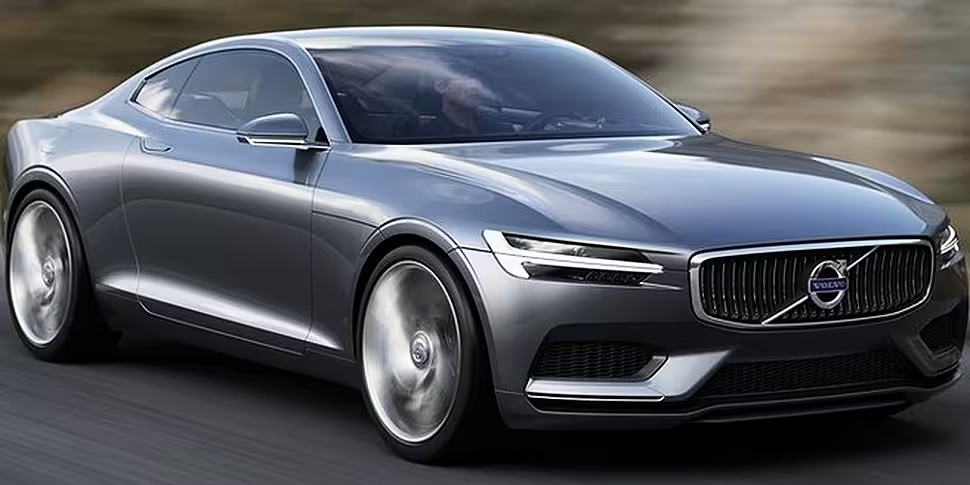Last month we had a look at some of Peugeot’s concept offerings from over the last few decades and the piece proved so popular that we’ve decided to look into the wonderful world of concepts again. This month we’re having a quick look at some of what Volvo has had to offer on the concept front since 1972.
VESC
Safety has always been a major issue with Volvo. At present they have a goal that “no one should be killed or seriously injured in a new Volvo car” by 2020. This is an exceptional goal, but it shouldn’t and probably doesn’t surprise many people. Even as a kid (all of those years ago) I remember people talking about how safe Volvo were. Back in 1972 Volvo showed off the VESC or the Volvo Experimental Safety Car. This machine was designed for safety research, and it put Volvo ahead of their time in terms of safety equipment.
The VESC contained many items which we very innovative. Take the seat belts for example, they automatically strapped occupants in when the car started – this never really took off in Ireland, but I can remember being shocked when I first experienced it in the USA. This 1972 car had air bags to the front and rear. Even the steering wheel was special – this is what Volvo called the “disappearing steering wheel” and it pulled itself forward by 150 mm in a frontal collision, which meant it was less of an obstacle for the driver.

Volvo Experimental Safety Car
The VESC will be recognisable to those of us above a certain age, because two years later the 240 was released and it looked very similar in build. Looks wasn’t the only thing the VESC shared with the 240, as many of the safety innovations were inherited from the car.
LCP 2000
These days we hear a lot about electric vehicles and alternative fuels. Back in 1979 Volvo engineers were challenged to design an extremely fuel efficient lightweight car which would be usable by the year 2000. They were told to use new materials and new technologies and the car had to be practical for at least two people, weigh less than 700kg and have a fuel consumption of below 4 litres per 100km. At the time these goals were considered unrealistic.

LCP 2000
Four cars were built by the Volvo team and they were unveiled in Stockholm in 1983. The LCP cars had specially designed transverse 3-cylinder turbo diesel engines. One was a 1.3litre with 50hp lightweight magnesium engine and the other was a 1.4 litre offering 90hp.This ran on any oil fuel, including rape seed oil and Volvo tells us it gave “a nice smell of fish & chips when it drove past.” Three years later Volvo unveiled the 480, which used many of the design features from the LCP 2000.
The Volvo ECC
Many of you will recognise this car from 1992 because without its design cues I don’t think we’d have the S80 as we know it now. This is the Volvo ECC (Environmental Concept Car). This car attracted so much attention that by 1998 Volvo used its design to create the S80. The ECC featured a hybrid power system, low environment impact components and a low weight of 1,580kg.

Volvo Environmental Concept Car
The Volvo 3CC and the VCC
Taking a leap forward to 2002, Volvo created the 3CC with a zero emissions powertrain which gave a range of 300km. It carried up to three adults using a two-plus-one seating arrangement.

3CC
A year later Volvo created the Versatility Concept Car (VCC) which was powered by a 6 cylinder 250hp engine. Their boast about this engine was that it offered a fuel economy of 6.5 litres/100km.

Versatility Concept Car
YCC – Your Concept Car
In 2004 Volvo showed the YCC. This was a concept car designed “by women for modern people”. This concept was first spoken about in 2001 when Marti Barletta gave a series of workshops to the Volvo team. Her expertise was on female consumer patterns and she claimed that “If you meet the expectations of women, you exceed the expectations of men”.
The project team consisted of five women. In December 2002 the management team gave the go-ahead to the project. Their brief was to develop a concept car which would win the approval of “that most demanding Volvo customer category of all - the independent female professional.”

YCC interior
This car offered smart storage, minimal maintenance and was “easy to park”. Storage was created for keys, phones, coins and other smaller items. Gull wing doors were chosen to make it easier to lift bags into behind the driver’s seat. Tyres on the vehicle were run-flat and the car was finished in “Easy-Clean” paint, which acted like the coating on a non-stick pan, which meant it was difficult for dirt to stick to it.

YCC
The YCC had a park assist button which measured parking space and it also had an auto-park function. The YCC offered 215hp through its 5-cylinder engine.
Volvo Concept Estate
Last year Volvo unveiled their Volvo Concept Estate vehicle. This car shows beautiful exterior design cues, but it also showed to the public the direction in which Volvo plans to take future interiors. It gets rid of the traditional button clusters and makes everything accessible from a touch screen control panel.

Volvo Concept Estate
“The basic idea is to organise controls and information in a perfectly intuitive and user-friendly way. Everything is exactly where you expect it to be, making the drive more enjoyable, efficient and safe,” says Thomas Ingenlath, Senior Vice President Design at Volvo Car Group.

Volvo Concept Estate
Other Concepts
Volvo has had a great many concept vehicles over the years and we only managed to look at a few of them today. Other concepts from the manufacturer includes; PCC (2000), ACC (2001), SCC (2001), PCC 2 (2001), Volvo Concept Universe (2011), Volvo Concept Coupé (2013) and Volvo Concept XC Coupé (2014).

Volvo Concept Estate









